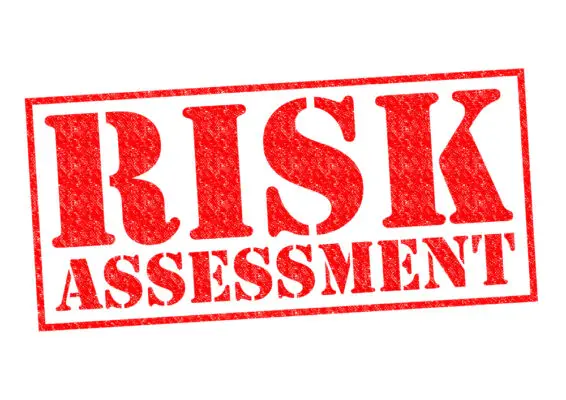A risk management plan is a comprehensive document that outlines how an organization will manage and respond to various risks. A risk management plan aims to minimize the negative impact of potential risks on an organization’s operations, finances, reputation, and stakeholders.
Risk management is an essential strategy of any business or organization. It involves identifying potential risks, assessing their impact, and developing mitigation strategies.
This article will guide how to write a risk management plan that identifies potential risks, assesses their impact, develops strategies for mitigation and monitoring, and updates the plan as needed.

Understanding the Importance of Risk Management
Risk management is essential in identifying, analyzing, evaluating, and prioritizing risks that may hinder an organization’s success. This process helps organizations to be proactive rather than reactive to potential risks which could negatively affect their operations.
Risk assessment is an integral part of risk management as it involves identifying possible threats and vulnerabilities that could cause harm to an organization. It also helps determine the likelihood of those risks occurring and estimate their possible impact on the organization.
Conducting a comprehensive risk assessment enables organizations to develop effective risk mitigation strategies that will help them prepare for potential hazards.
Risk mitigation strategies are measures organizations take to reduce or eliminate identified risks. These strategies aim to lessen the impact of potential hazards on organizational operations, resources, reputation, or stakeholders.
Some common risk mitigation strategies include avoiding risks altogether by eliminating activities that pose significant threats; reducing the likelihood or severity of risk by implementing control measures.
Transferring some or all of the liability for identified risks through insurance policies; or accepting certain levels of residual risk when no other suitable options exist.
Developing robust risk mitigation strategies based on thorough risk assessments, organizations can minimize vulnerability to various risks while ensuring continued success.
Identifying Potential Risks
Identifying potential hazards entails thoroughly analyzing the environment and the various factors that may contribute to adverse outcomes. This step is essential in developing an accurate understanding of the scope and nature of risks that an organization may face.
Risk identification techniques are used to identify all possible risks, including those that may seem trivial or unlikely but could still significantly impact the organization’s operations.
Risk categorization methods are then employed to categorize identified risks based on their severity, likelihood, and anticipated impact. This helps prioritize risk management efforts towards higher-risk areas/sections/departments/business processes.
Risks can be categorized as strategic, operational, financial, or legal risks, among others, depending on their characteristics.
It’s important to note that identifying potential risks is not a one-time event but rather an ongoing process that requires continuous monitoring and review. New risks can emerge due to changes in the business environment, technological advancements, or even natural disasters.
Therefore, it’s necessary to develop an organization’s risk awareness culture by involving all stakeholders in risk management activities such as regular risk assessments and reporting mechanisms.
Assessing Risks and Their Impact
Evaluating the magnitude of potential risks and their impact on an organization’s operations is crucial in ensuring its long-term sustainability, as neglecting to do so could result in devastating consequences for the organization and its stakeholders.
Risk assessment techniques are used to identify potential risks that may occur and determine how significant these risks are.
This process involves determining the likelihood of a risk occurring, the potential impact it could have on the organization if it does occur, and how best to mitigate or manage that risk.
One common technique used for assessing risks is risk probability analysis. This technique involves identifying all possible outcomes associated with a particular risk event, assigning probabilities to each outcome based on its likelihood of occurrence, and then calculating the expected value of each outcome.
Another critical aspect of assessing risks is considering their impact on different areas of an organization’s operations. For instance, some risks may only affect specific departments or functions within an organization, while others may have far-reaching consequences across multiple areas.
Carefully evaluating each risk’s potential impact, organizations can better understand how to allocate resources toward mitigating those risks that pose the greatest threat to their overall success.
Ultimately, by employing effective risk assessment techniques such as probability analysis and considering each risk’s potential impact across various areas, organizations can develop robust risk management plans to safeguard against unforeseen events without compromising their long-term viability.

Developing Strategies to Mitigate Risks
Research shows that companies with robust risk mitigation strategies experience an average of 60% fewer financial losses due to unforeseen events than those without such measures.
To develop these strategies, it is essential first to identify the specific risks and their potential impact on the organization. Once this has been established, organizations can use several risk mitigation techniques.
These include avoiding the risk altogether, transferring it to another party through insurance or contracts, reducing the likelihood or severity of the risk through preventative measures or contingency planning, and finally accepting the risk while having a plan in place for how to respond if it occurs.
Risk response planning involves developing a comprehensive plan for how an organization will respond should a significant risk event occur. The risk management plan should outline steps and procedures employees should follow when facing such an event.
It should also include contingencies for different scenarios based on the severity and likelihood of occurrence.
For example, if there is a fire in one building area, employees should know exactly where they need to go and what actions to take depending on their location.
Developing effective strategies to mitigate risks requires careful planning and consideration from all levels of an organization. This helps protect against financial loss and ensures business continuity by minimizing disruptions caused by these events.
Monitoring and Updating Your Risk Management Plan
Regular review of the risk management plan allows organizations to identify new risks or changes in existing risks that must be addressed. It also helps ensure that risk mitigation strategies are practical and efficient and that resources are allocated appropriately.
Stakeholder involvement is crucial in monitoring and updating the risk management plan. Stakeholders may include employees, customers, suppliers, regulatory bodies, and other parties interested in the organization’s operations.
Engaging stakeholders in the process can help identify blind spots or gaps in the current strategy and potential improvement opportunities. It can also increase buy-in from stakeholders by giving them a sense of ownership over the risk management process.
An effective risk management plan should be viewed as a living document that requires ongoing attention and updates as circumstances change.
Organizations should establish clear protocols for how often the plan will be reviewed, who will be involved in the review process, and what criteria will be used to evaluate its effectiveness.
Frequently Asked Questions
What are the common mistakes to avoid when developing a risk management plan?
Inadequate risk assessment and lack of stakeholder involvement are two common mistakes that should be avoided when developing a risk management plan.
An insufficient understanding of risks can result in overlooking potential threats or underestimating the severity of consequences, leading to poor decision-making and ineffective responses.
On the other hand, not involving stakeholders can create communication gaps, misunderstandings, and resistance to implementing risk management strategies.
How do you determine the risk level acceptable for your organization?
Determining the level of risk acceptable for an organization requires a thorough understanding of its risk tolerance and appetite.
Risk tolerance refers to the amount of risk an organization can bear without causing significant harm. In contrast, risk appetite determines how much risk an organization will take to pursue its goals and objectives.
Determining these factors involves analyzing various internal and external variables such as industry standards, regulatory requirements, financial resources, stakeholder expectations, and organizational culture.
Only when these factors are considered can organizations set realistic goals for their risk management strategies and determine which risks they are willing to accept or avoid altogether.
What are some best practices for communicating and implementing your risk management plan?
Risk communication conveys information about potential risks to stakeholders, while implementation strategies involve implementing plans.
Best practices for risk communication include clear and concise messaging tailored to the specific audience, transparency, and ongoing updates throughout the process.
Implementation strategies should also be carefully considered, focusing on identifying and addressing potential roadblocks before they occur.
Additionally, regularly reviewing and updating the plan is essential to ensure its continued effectiveness in managing organizational risks.
How do you ensure your risk management plan aligns with your organization’s overall goals and objectives?
Alignment strategy is a goal-oriented approach that ensures all aspects of an organization’s operations, including risk management plans, are geared towards achieving the same objectives.
While some may argue that aligning risk management plans with overall goals and objectives can be time-consuming and resource-intensive, it is essential to note that overlooking this crucial aspect can lead to wasted efforts and missed opportunities.
A well-aligned risk management plan helps an organization identify and manage potential risks and prioritize resources efficiently toward achieving its strategic goals.
How do you measure the effectiveness of your risk management plan over time?
Tracking progress and adjusting strategies are essential components for measuring the effectiveness of a risk management plan over time.
Organizations must establish key performance indicators (KPIs) that align with the objectives of their risk management plan and monitor these KPIs continuously to evaluate progress.
Effective risk management requires continuous monitoring and adaptation to ensure that risks are being managed in line with organizational goals and objectives.

Conclusion
In conclusion, a risk management plan is essential to any successful venture. It involves identifying potential risks, assessing their impact, and developing mitigation strategies.
Failure to manage risks can result in significant losses and even the collapse of a business or project.
Therefore, developing a robust risk management plan that includes regular monitoring and updating is crucial. Organizations are put in harm’s way when we neglect to manage risks effectively.

Chris Ekai is a Risk Management expert with over 10 years of experience in the field. He has a Master’s(MSc) degree in Risk Management from University of Portsmouth and is a CPA and Finance professional. He currently works as a Content Manager at Risk Publishing, writing about Enterprise Risk Management, Business Continuity Management and Project Management.

